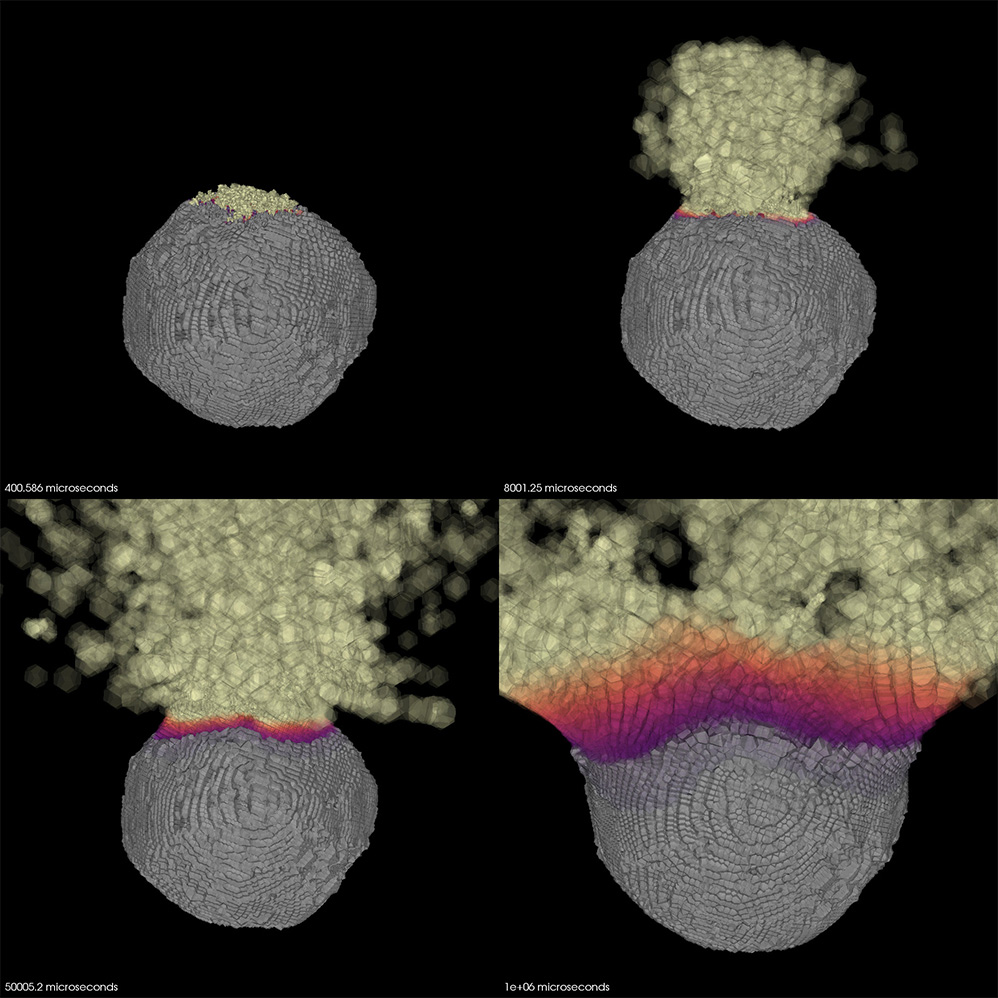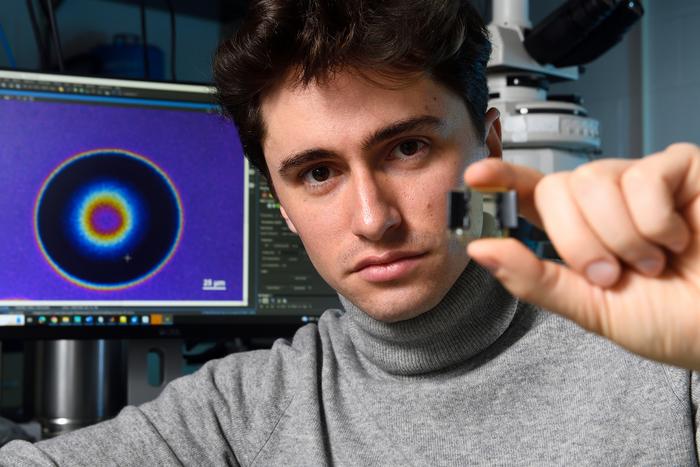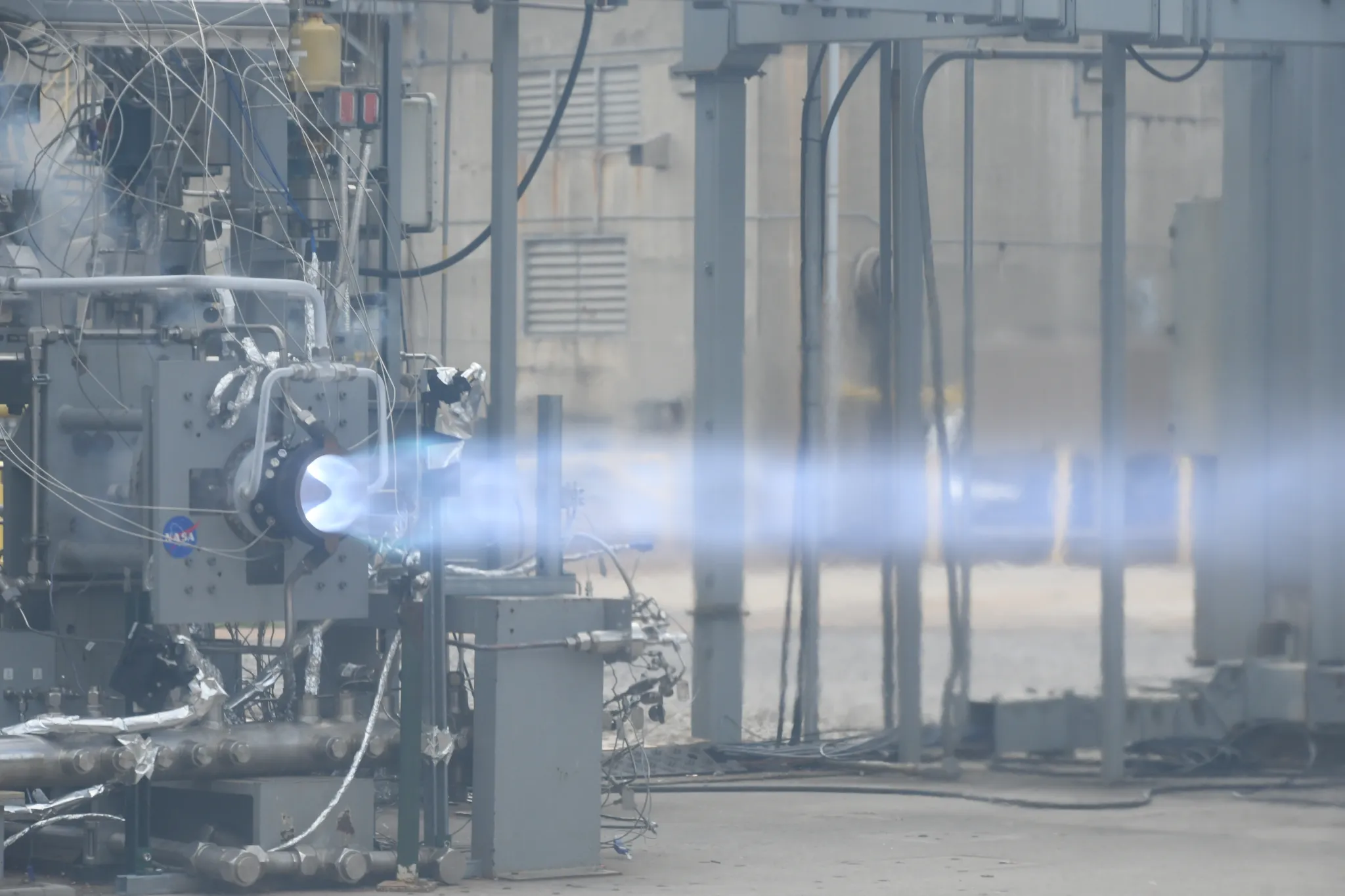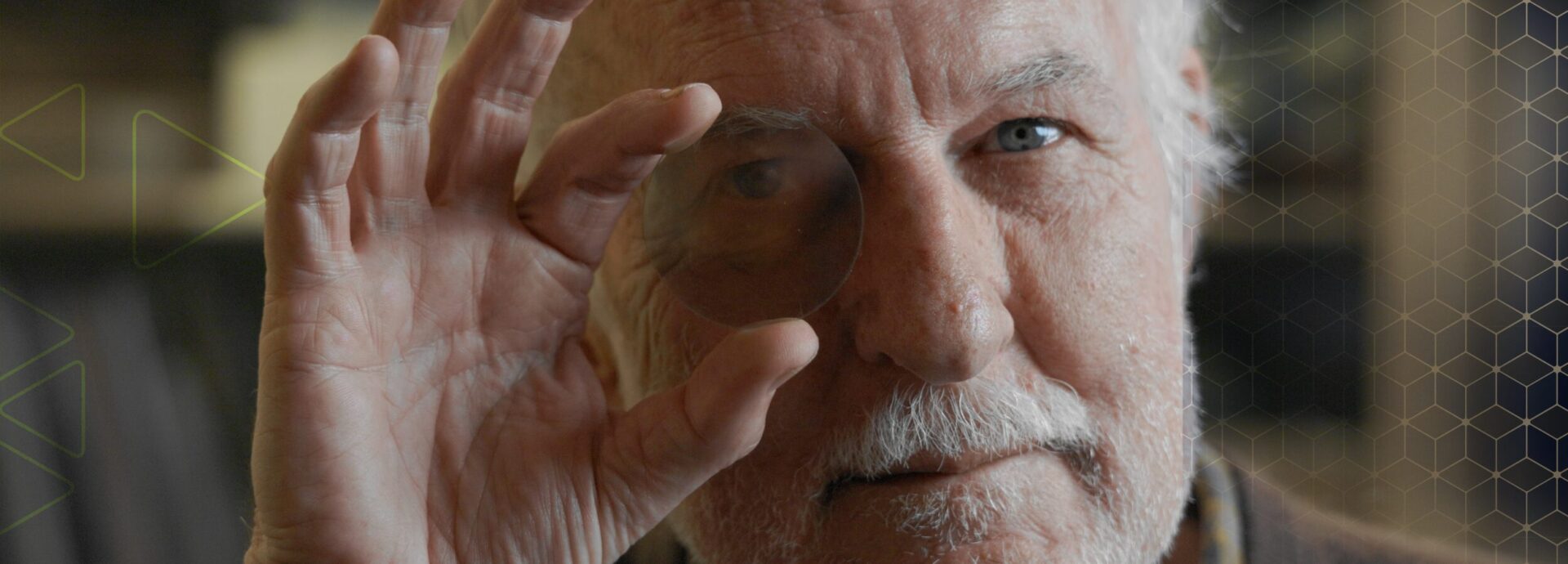
A modeling tool developed by scientists at Lawrence Livermore National Laboratory shows the progression an asteroid being broken up by a theoretical nuclear device detonated near the the surface of the near-Earth object.
Graphic illustration courtesy of Mary Burkey.
Researchers at Lawrence Livermore National Laboratory (LLNL) have developed a modeling tool for assessing the potential use of a nuclear device to defend the planet against catastrophic asteroid impacts.
The research, published today in the Planetary Science Journal, introduces a novel approach to simulating the energy deposition from a nuclear device on an asteroid’s surface. This new tool improves our understanding of the nuclear deflection’s radiation interactions on the asteroid’s surface while opening the door to new research on the shockwave dynamics affecting the inner asteroid.
This model will allow researchers to build upon the insights gained from NASA’s recent Double Asteroid Redirection Test (DART) mission, where, in September 2022, a kinetic impactor was deliberately crashed into an asteroid to alter its trajectory. However, with limitations in the mass that can be lifted to space, scientists continue to explore nuclear deflection as a viable alternative to kinetic impact missions.
Nuclear devices have the highest ratio of energy density per unit of mass of any human technology, making them an invaluable tool in mitigating asteroid threats, said LLNL physicist Mary Burkey, who led the research.
“If we have enough warning time, we could potentially launch a nuclear device, sending it millions of miles away to an asteroid that is headed toward Earth,” Burkey said. “We would then detonate the device and either deflect the asteroid, keeping it intact but providing a controlled push away from Earth, or we could disrupt the asteroid, breaking it up into small, fast-moving fragments that would also miss the planet.”
Accurate predictions for the effectiveness of nuclear deflection missions rely on sophisticated multiphysics simulations, Burkey said, explaining that LLNL simulation models cover a wide range of physical factors, which makes them complex and computationally demanding.
The paper introduces an efficient and accurate library of X-ray energy deposition functions, developed using the Kull radiation-hydrodynamics code. High-fidelity simulations tracked photons penetrating surfaces of asteroid-like materials such as rock, iron, and ice, while accounting for more complex processes, such as reradiation. The model also considers a diverse set of initial conditions, including different porosities, source spectra, radiation fluences, source durations, and angles of incidence. This comprehensive approach makes the model applicable to a wide range of potential asteroid scenarios.
Should a real planetary defense emergency arise, high-fidelity simulation modeling will be critical in providing decision-makers with actionable, risk-informed information that could prevent asteroid impact, protect essential infrastructure and save lives, explained Megan Bruck Syal, LLNL’s planetary defense project lead.
“While the probability of a large asteroid impact during our lifetime is low, the potential consequences could be devastating,” Bruck Syal said.
Original Article: New nuclear deflection simulations advance planetary defense against asteroid threats
More from: Lawrence Livermore National Laboratory
The Latest Updates from Bing News
Go deeper with Bing News on:
Nuclear deflection
- SHiP to chart hidden sector
CERN selected a new experiment called SHiP to search for hidden particles using high-intensity proton beams from the SPS.
- Nuclear Reactor
If you’ve ever wanted to operate your own nuclear reactor, you probably aren’t going to get one in your backyard shop. However, thanks to the University of Manchester, you can get a simulated ...
- Nuclear Notebook
Since 1987, the Bulletin of the Atomic Scientists has published the Nuclear Notebook, an authoritative accounting of world nuclear arsenals compiled by top experts from the Federation of American ...
- Preaching Caution on the Road to AI
There is little or no meaningful coordination and cooperation between nations regarding AI regulation. An artificial superintelligence will enslave us or set us free. Artificial superintelligence will ...
- The War Games of Israel and Iran
While Netanyahu and the Islamic Republic exchange ballistic “messages,” the question of Palestine demands the moral and strategic courage of actual statesmen.
Go deeper with Bing News on:
Planetary defense
- 27,500 ‘hidden’ near-Earth asteroids discovered using Google cloud
Scientists discovered 27,500 asteroids using Google Cloud and a new algorithm, THOR, enhancing Earth's defense capabilities.
- Asteroid Hunters Spot 27,500 Overlooked Space Rocks Careening Around Our Solar System
Detection of the rocks is crucial to the future of 'planetary defense' — a global effort to prevent potential asteroid impacts on earth.
- Google Cloud accelerates asteroid discovery for US-based non-profit
Google Cloud opens up about the work it is doing with a US-based planetary science to help map the solar system ...
- Robot-Explorers, Futuristic SpaceX Starships Set To Transform The Moon
Simultaneous revolutions in creating AI-enhanced space robots and in spaceflight with SpaceX's super-advanced Titan-size Starship capsules, are set to transform the Moon.
- 7 unconfirmed, unlucky tales of people killed by meteorites
There isn't a single confirmed case of people killed by meteorites. But that’s not to say we haven’t come close.










